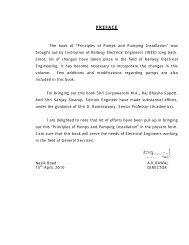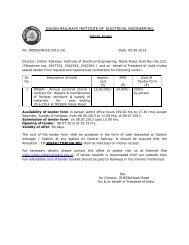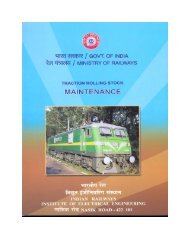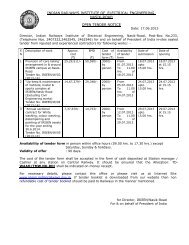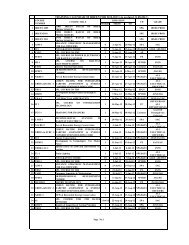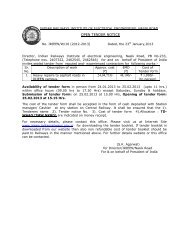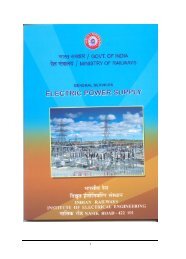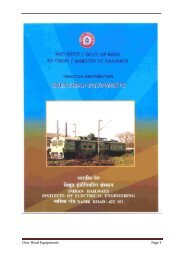remote control equipment - Indian Railways Institute of Electrical ...
remote control equipment - Indian Railways Institute of Electrical ...
remote control equipment - Indian Railways Institute of Electrical ...
Create successful ePaper yourself
Turn your PDF publications into a flip-book with our unique Google optimized e-Paper software.
The configuration used in Railway SCADA system is party line one-on-a-few<br />
configuration. Here master station communicates with the RTUs via party line (shared)<br />
communication channel. In this case a unique address is required for each RTU on the<br />
channel.<br />
This Configuration has the advantages <strong>of</strong> sharing the master station communication<br />
logic and the advantage <strong>of</strong> sharing the communication channel.<br />
7.2.4.2 Communication Media<br />
Availbale communication media options are<br />
* Metallic cable pairs<br />
* Power line carrier (not used in indian <strong>Railways</strong>)<br />
* Microwave<br />
* Leased circuits<br />
* Fiber optic cable<br />
* Satellites (not used in <strong>Indian</strong> <strong>Railways</strong>)<br />
As on date only metalic cable pairs and fiber optic cable are <strong>of</strong> interest, only these<br />
options are discussed below :-<br />
7.2.4.3 Metallic cable pairs<br />
Cables have the advantage <strong>of</strong> involving little new technology and so it is easy to<br />
consider the use <strong>of</strong> cable pairs for data transmission, where typically, one such pair can be<br />
used for simplex or half duplex transmission at speeds upto 2400 bits per second.<br />
Cables, as with S&T installations must typically be protected against induced voltage<br />
surges or lightening strikes by protective devices such as gas tube protectors and in addition<br />
if entering a high voltage substation, must be protected from huge difference in adjacent<br />
ground mat potential during substation fault current conditions through the use <strong>of</strong> addtional<br />
devices such as neutralising transormers.<br />
7.2.4.4 Fiber Optic Cable<br />
Fiber optic cable sytems that are used for communications are made <strong>of</strong> three basic<br />
components. The first component is a long fiber <strong>of</strong> very pure glass or plastic that permits light<br />
to travel from the transmitor to the third component i.e. receiver. The reveiver converts the light<br />
signals back into electrical signals. The signals can be either analog or digital.<br />
In addition to these three components, there are repeater where the light signals are<br />
converted to electrical signals amplified and converted back again. Splicing devices are also<br />
necessary in order for signals to travel from one fiber to the others with minimum attenuation.<br />
126






